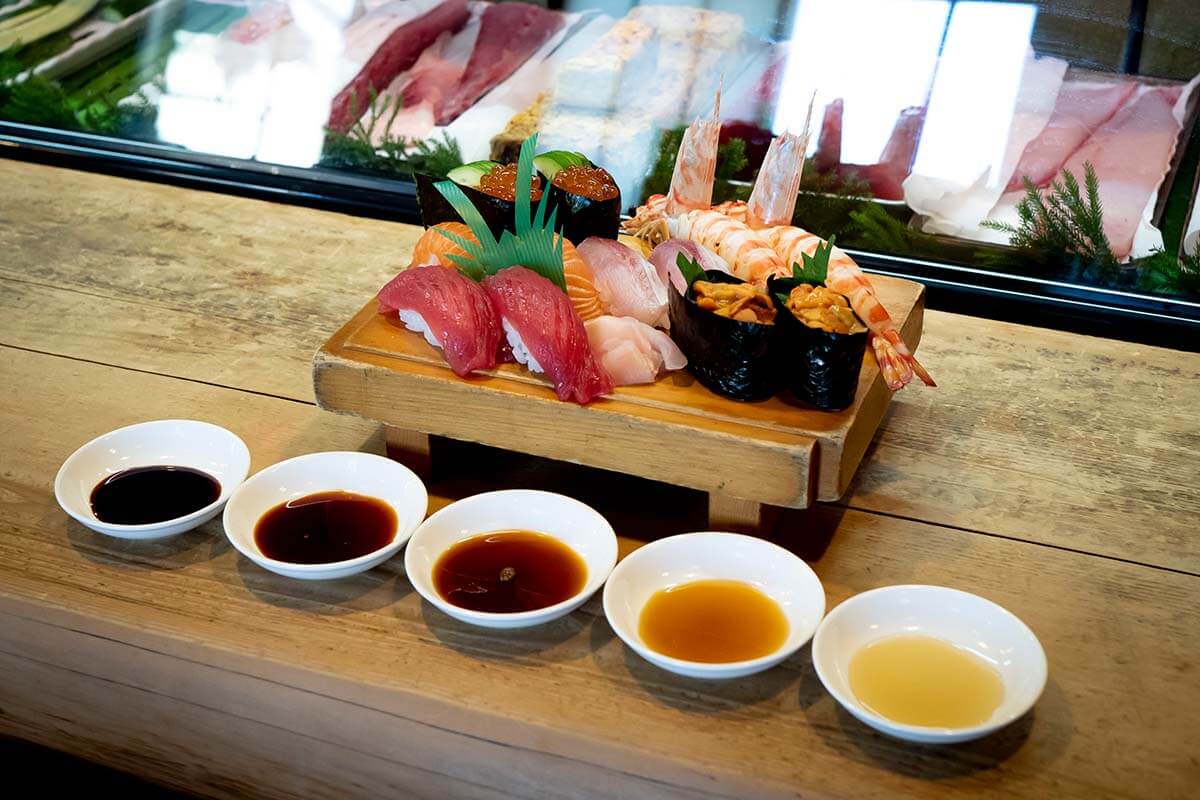What is Soy Sauce?
Last October, American food professionals visited fermented food producers to deepen their knowledge of Japanese fermentation culture during the “Hakko Tourism in Japan” tour campaign. As part of the tour, organizers held a tasting session where guests gave candid advice from the perspective of the American market to food product manufacturers looking to enter the United States market.
Soy sauce was established in Japan and plays a leading role in the flavor of Japanese cuisine today.
The seasoning, which combines the “salty,” “umami,” “sweet,” “sour,” and “bitter” flavors, is suitable not only for Japanese cuisine but also for all ingredients and dishes from every region of the world. Because of its convenience, which has earned it the nickname “all-purpose seasoning,” the export volume of soy sauce has been increasing year by year, and local production has been progressing in every region of the world, making it popular throughout the world.

Soy sauce could have been born only in Japan.
How did such a convenient seasoning come about to be created in Japan? The keywords are “island country,” “koji,” and “four seasons.” The original form of soy sauce was pickle made with salt. In Japan, an island country surrounded by the sea, people have been using salt from the sea to preserve food long before refrigerators. Eventually, the precursor to soy sauce was combined with the technology for turning grain into “koji,” another key ingredient in traditional Japanese seasonings, and developed into today’s soy sauce. Koi-kuchi soy sauce was developed around 1640.
In addition, soy sauce is created by the “four seasons” of Japan. Koji is made and set during the cold winter and the lactic acid bacteria starts working, yeast bacteria for principal fermentation becomes active when it becomes warmer in the spring, and when the summer heat is gone, post-ripening yeast bacteria takes over. When the weather turns cold again in the winter, the flavors of the soy sauce come together, and soy sauce is pressed and completed. Soy sauce is truly a seasoning that could have been born only in Japan.
Selecting a higher grade of soy sauce.
Soy sauce goes well with just about anything, but if you dare to go off the beaten path and choose something a little more particular, you can take it up a notch and find some unexpected flavors. Why not try a different type of soy sauce? There are five types of soy sauce. In the order of the lightest to the darkest color, they are shiro, usu-kuchi, koi-kuchi, sai-shikomi, and tamari. With about 85% of the soy sauce produced in Japan being koi-kuchi soy sauce, the Japanese soy sauce you pick up in a stare is most likely a koi-kuchi soy sauce.
Usu-kuchi soy sauce brings out the color and flavor of the ingredients better than koi-kuchi soy sauce, and it goes well with olive oil. Shiro soy sauce, which is even lighter in color, will bring out the color of the ingredients even more beautifully, and even when used in local dishes, it will bring the flavors together without adding the soy sauce flavor. Sai-shikomi soy sauce, which is darker than koi-kuchi soy sauce, can be used as a brown sauce, while tamari soy sauce gives a deeper flavor. Tamari soy sauce is also available in a gluten-free version.
The color and flavor vary further depending on the production method, the type of container used for brewing, etc. The taste also varies by the brewer. And if the colors and flavors of the soy sauce are different, then the taste of the food it is used to cook will also change. The good thing about soy sauce is that no matter which one you choose, you won’t find any major disappointments and even when you find an unexpected flavor, you will find yourself saying, “Ok this works, too.” I want people to enjoy trying out different types of soy sauce without overthinking.
Keiko Kuroshima, the world's first soy sauce sommelier and certified sensory inspector, hails from Japan's soy sauce production hub in Shodoshima. She co-authored a book on the island's breweries and is the only female among the three soy sauce sommeliers worldwide. Her expertise and passion elevate soy sauce appreciation globally.

